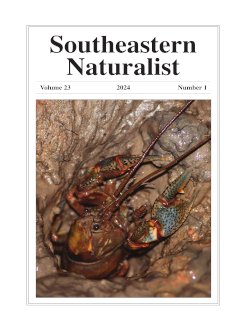I documented the number of active nests of Petrochelidon pyrrhonota (Cliff Swallow) at 20 colony sites along or near the Great Pee Dee River (GPDR) corridor in the lower Piedmont of North Carolina and Coastal Plain of South Carolina in 2012. I again monitored active colonies in this area from 2016 to 2018 and in 2022. Cliff Swallows continued to breed primarily at bridges and other water-based anthropogenic sites (23 of 29; 79%) and some land-based sites, but abandoned a highway overpass site. Numbers of active nests at the same 20 colony sites over the 5 years during early to mid-May fluctuated from 1862 in 2016, the only year when the number of active nests exceeded those in 2012, to 1050 in 2018. Number of active nests at colony sites decreased by 18% between 2012 and 2022. Nesting populations at colony sites have decreased within the GPDR corridor in North Carolina, where 6 radial colony sites near the GPDR were abandoned by 2022. In contrast, nesting populations within the GPDR corridor in the Coastal Plain of South Carolina have remained stable, but 8 new colony sites were detected, including 1 site near the coast. In the Middle Atlantic Coastal Plain of southeastern North Carolina, rapid expansion of colony sites has occurred in tidewater regions or near the coast, but the size of 3 colony sites closest to South Carolina (85 km) were small. The main source of Cliff Swallow colony dispersal and expansion of colony sites into coastal regions of South Carolina will likely be from within the GPDR corridor and other areas in the interior of the northeastern Coastal Plain of South Carolina, despite the increasing number of colony sites in the Middle Atlantic Coastal Plain of North Carolina.
How to translate text using browser tools
26 February 2024
Range Expansion and Population Trends of Cliff Swallows in Northeastern South Carolina and Southeastern North Carolina, Especially at Colony Sites along the Great Pee Dee River Corridor
Douglas B. McNair
ACCESS THE FULL ARTICLE

Southeastern Naturalist
Vol. 23 • No. 1
March 2024
Vol. 23 • No. 1
March 2024




